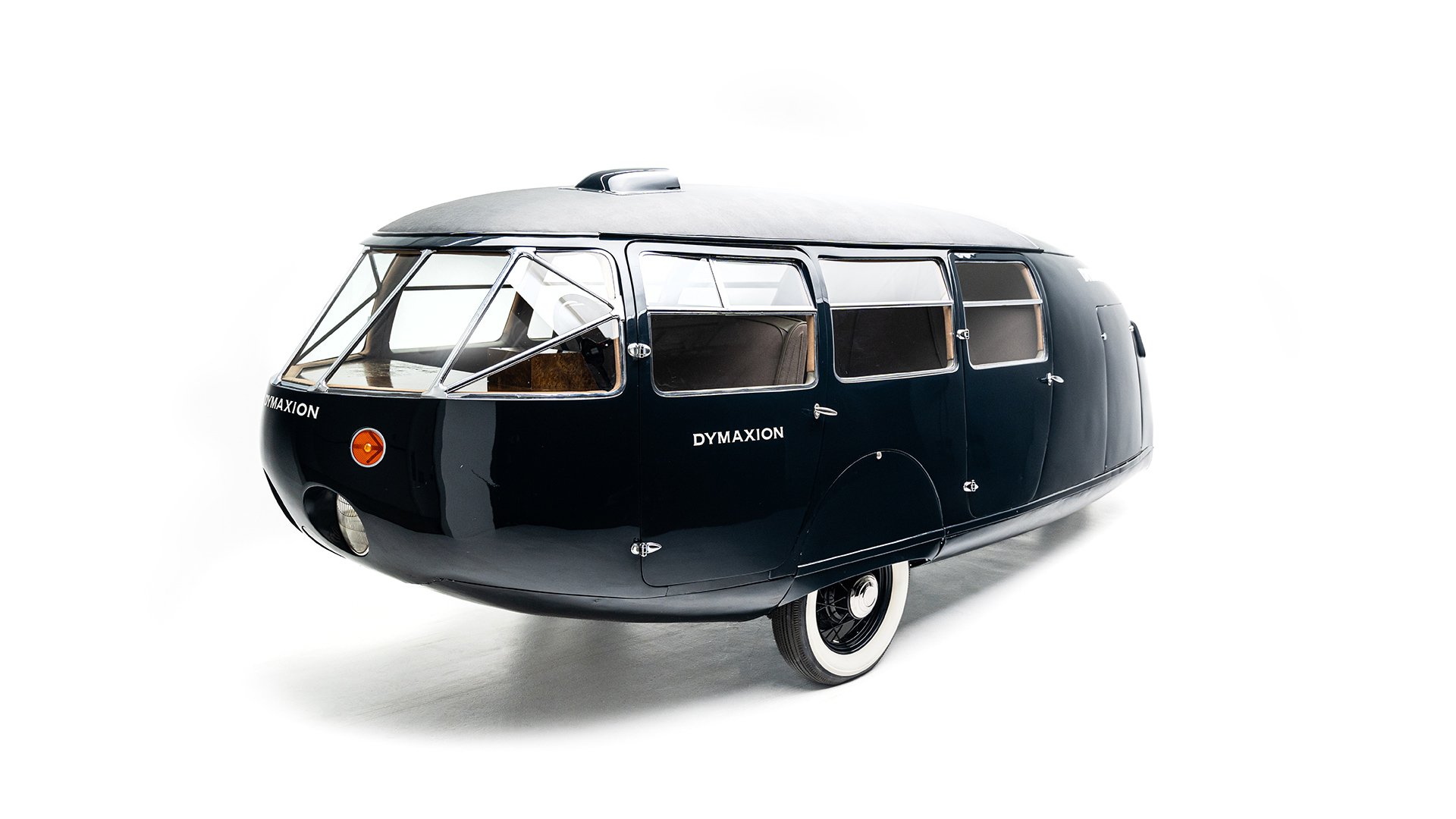The Dymaxion: An Exercise in Futuristic Design
Originally published on September 28, 2024. Written by Andy Wasif.
Throughout the vast history of automotive design, there have been many concepts and vehicle designs – the Pontiac Bonneville Special which was unveiled at the 1954 edition of the GM Motorama, Chrysler's iconic 1960 XNR named after its lead designer Virgil Exner, the third generation Mazda RX-7 with its Wankel rotary engine, or the powerful Dodge Viper. Some made it to production and built a lasting legacy to this day, while many have come and gone. But now and again, out of those ancient creations of metal and rubber that are no longer recognized by the majority of car aficionados, a car is mentioned that attracts the attention of a knowledgeable few. Like Marlon Brando showing up at an awards show, it’s a surprise when some cars reappear. And if you get the reference, perhaps you’re old enough to know of the Dymaxion Prototype automobile. One of only three made nearly a century ago in the 1930s, the last remaining original prototype is currently on display in the Hammer Gallery of the Petersen Automotive Museum.
This unique space-age car was the brainchild of noted architect, designer, inventor, and futurist Buckminster Fuller (1895-1983). The polymathic designer is also the creator of the geodesic dome, a structure with several examples but perhaps most recognizable as the centerpiece of Epcot Center in Florida.
Fuller considered himself a “comprehensive anticipatory design scientist” in that he wanted to anticipate problems that people might experience in the future and use natural resources more efficiently, thus ensuring that there would be enough resources to take care of everybody on the planet. He was a man ahead of his time. And the famous three-wheeled vehicle is an example of that. The name Dymaxion comes from an amalgamation of Dynamic, Maximum, and Tension and was coined in 1929 by the public relations staff at the Marshall Field department store where Fuller was presenting a model of his 4D house. He later created the Dymaxion Corporation and used the name for many of his projects.
That 4D house–the Dymaxion House–was to be an inexpensive, lightweight single-family dwelling. It was a revolutionary vision, primarily conceived for veterans to obtain housing, for which he was trying to raise money to build those prefabricated houses on an industrial scale. Of the grand scope of such an idea, Architect Norman Foster, who had the chance to work with the design visionary for a few years before Fuller’s death, “Bucky was one of those rare individuals who fundamentally influenced the way that one comes to view the world.”
Taken by the work of the Swiss-French architectural theorist Le Corbusier, Fuller realized the seed for a concept of a streamlined car with an ovoid frame. This spurred him to consider what he called “4D-transport,” as he took ovoid contours from LeCorbusier and added three wheels onto a triangulated framework. With funding from Anna “Nannie” Biddle, who he told not to question his monetary requests nor his purchases, he began work on the prototype along with fellow architect Sterling Burgess, who was also a brilliant designer of yachts and aircraft.
With the first $450 from Biddle, Fuller bought a Ford Tudor which he plundered for its engine, running gear, chassis, and gearbox. The chassis was then remodeled with parts from other cars including Studebaker and Chevy. As work moved along, Fuller hired Polish sheet-metal workers, Italian machine-tool men, Scandinavian wood craftsmen, and former Rolls-Royce coach makers. In 1932, Fuller also commissioned models from Japanese-American sculptor Isamu Noguchi.
The result was an aerodynamic, three-wheeled, 20-foot long zeppelin-shaped vehicle with rear steering and front-wheel drive. Fuller preferred not to call it a car, but a vehicle for land and sea. It features a canvas roof, lacquered aluminum over a wooden frame, and Ford V-8 transmission in the rear. It was meant to maximize efficiency with room for eleven passengers and gas mileage of up to 30 miles per gallon on alcohol fuel at a top speed of 90 miles per hour. It measured twenty feet long and weighed in at around 2,700 pounds and looked like a tadpole or flying fish, or to Fuller like a plane in its “ground taxiing phase,” and was never meant for production, but to show what could be.
In 1933, the car was featured in Shelter, an architectural magazine that Fuller had purchased and made himself editor-in-chief. Finally, the Dymaxion Prototype was unveiled at the Chicago World’s Fair but sadly was damaged in a fatal crash as another car drove too close to it along Lake Shore Drive in the city. As it was being rebuilt, it caught fire, showing the car may have been more snakebitten than blessed.
Over the next two years, two more prototypes were built. Prototype III was cut up for scrap metal in the 1950s, but Prototype II survives and is on display here. Even this one nearly didn’t make it as it had disappeared for many years until 1968 when it was discovered on a farm by Arizona State University engineering students. The owner was using it as a chicken coop. The students wisely bought it for $3000.
The Dymaxion is a car you have to see to believe, one that has more historical value than one might think, and one that lives on in other ways. As Foster said, “The Dymaxion has provided architecture with a central philosophy today–sustainability, technology, and human-centric design.” When you stand beside it upon your visit, imagine what would have been if it had made it into production and perhaps achieved Fuller’s vision.






